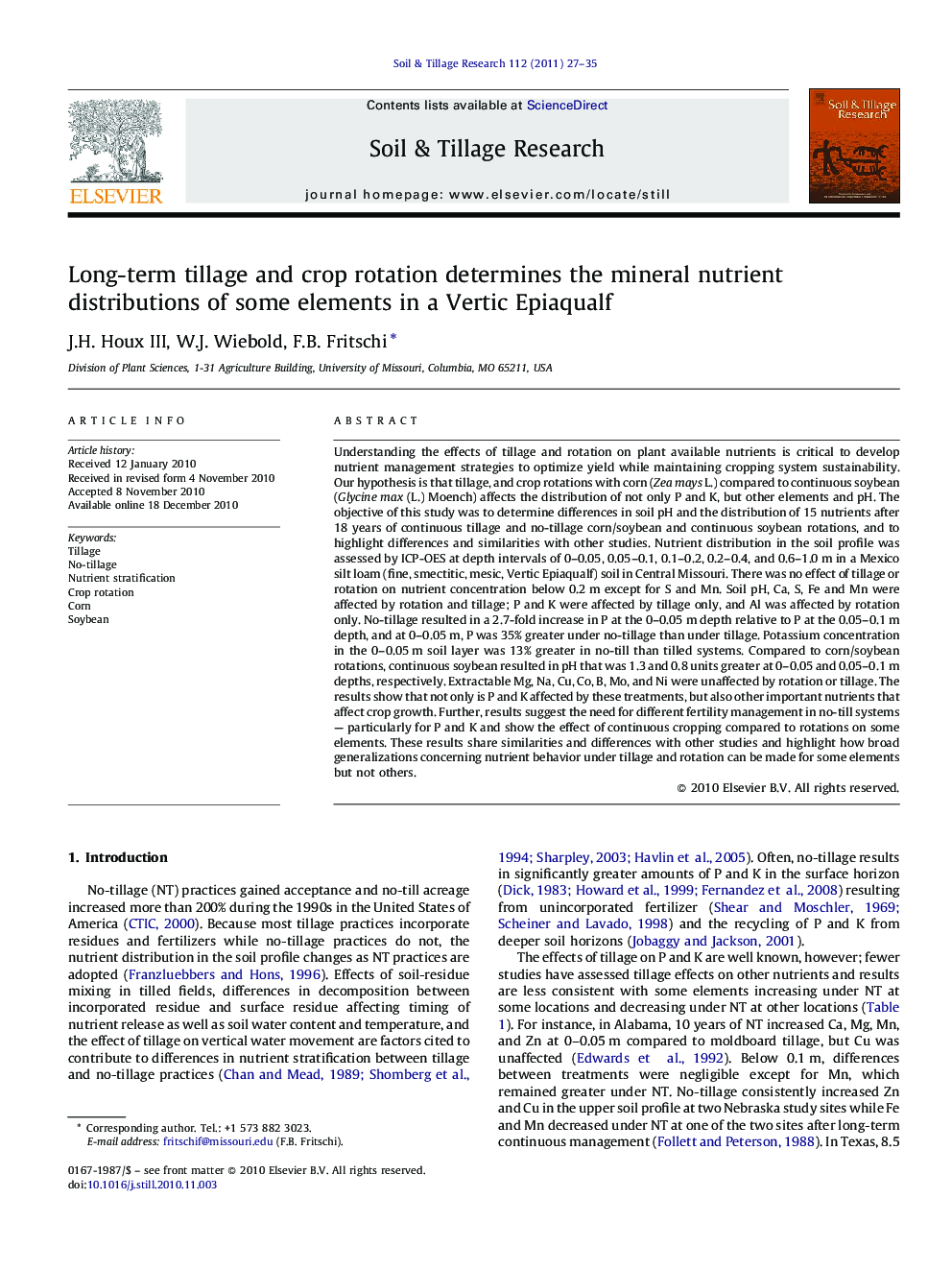| کد مقاله | کد نشریه | سال انتشار | مقاله انگلیسی | نسخه تمام متن |
|---|---|---|---|---|
| 306164 | 513079 | 2011 | 9 صفحه PDF | دانلود رایگان |

Understanding the effects of tillage and rotation on plant available nutrients is critical to develop nutrient management strategies to optimize yield while maintaining cropping system sustainability. Our hypothesis is that tillage, and crop rotations with corn (Zea mays L.) compared to continuous soybean (Glycine max (L.) Moench) affects the distribution of not only P and K, but other elements and pH. The objective of this study was to determine differences in soil pH and the distribution of 15 nutrients after 18 years of continuous tillage and no-tillage corn/soybean and continuous soybean rotations, and to highlight differences and similarities with other studies. Nutrient distribution in the soil profile was assessed by ICP-OES at depth intervals of 0–0.05, 0.05–0.1, 0.1–0.2, 0.2–0.4, and 0.6–1.0 m in a Mexico silt loam (fine, smectitic, mesic, Vertic Epiaqualf) soil in Central Missouri. There was no effect of tillage or rotation on nutrient concentration below 0.2 m except for S and Mn. Soil pH, Ca, S, Fe and Mn were affected by rotation and tillage; P and K were affected by tillage only, and Al was affected by rotation only. No-tillage resulted in a 2.7-fold increase in P at the 0–0.05 m depth relative to P at the 0.05–0.1 m depth, and at 0–0.05 m, P was 35% greater under no-tillage than under tillage. Potassium concentration in the 0–0.05 m soil layer was 13% greater in no-till than tilled systems. Compared to corn/soybean rotations, continuous soybean resulted in pH that was 1.3 and 0.8 units greater at 0–0.05 and 0.05–0.1 m depths, respectively. Extractable Mg, Na, Cu, Co, B, Mo, and Ni were unaffected by rotation or tillage. The results show that not only is P and K affected by these treatments, but also other important nutrients that affect crop growth. Further, results suggest the need for different fertility management in no-till systems — particularly for P and K and show the effect of continuous cropping compared to rotations on some elements. These results share similarities and differences with other studies and highlight how broad generalizations concerning nutrient behavior under tillage and rotation can be made for some elements but not others.
Research highlights▶ Phosphorus and K were affected by tillage and were stratified in the uppermost soil layers under no-tillage treatments. ▶ Soil pH, Ca, S, Fe, and Mn were affected by both tillage and rotation. ▶ Aluminum was affected by rotation only and was greater under rotations with corn. ▶ Magnesium, Zn, Na, Cu, Co, B, Mo, and Ni were not affected by either tillage or rotation treatments.
Journal: Soil and Tillage Research - Volume 112, Issue 1, March 2011, Pages 27–35